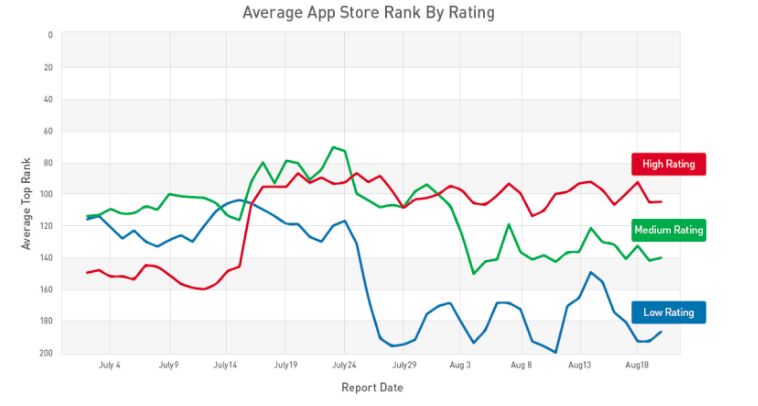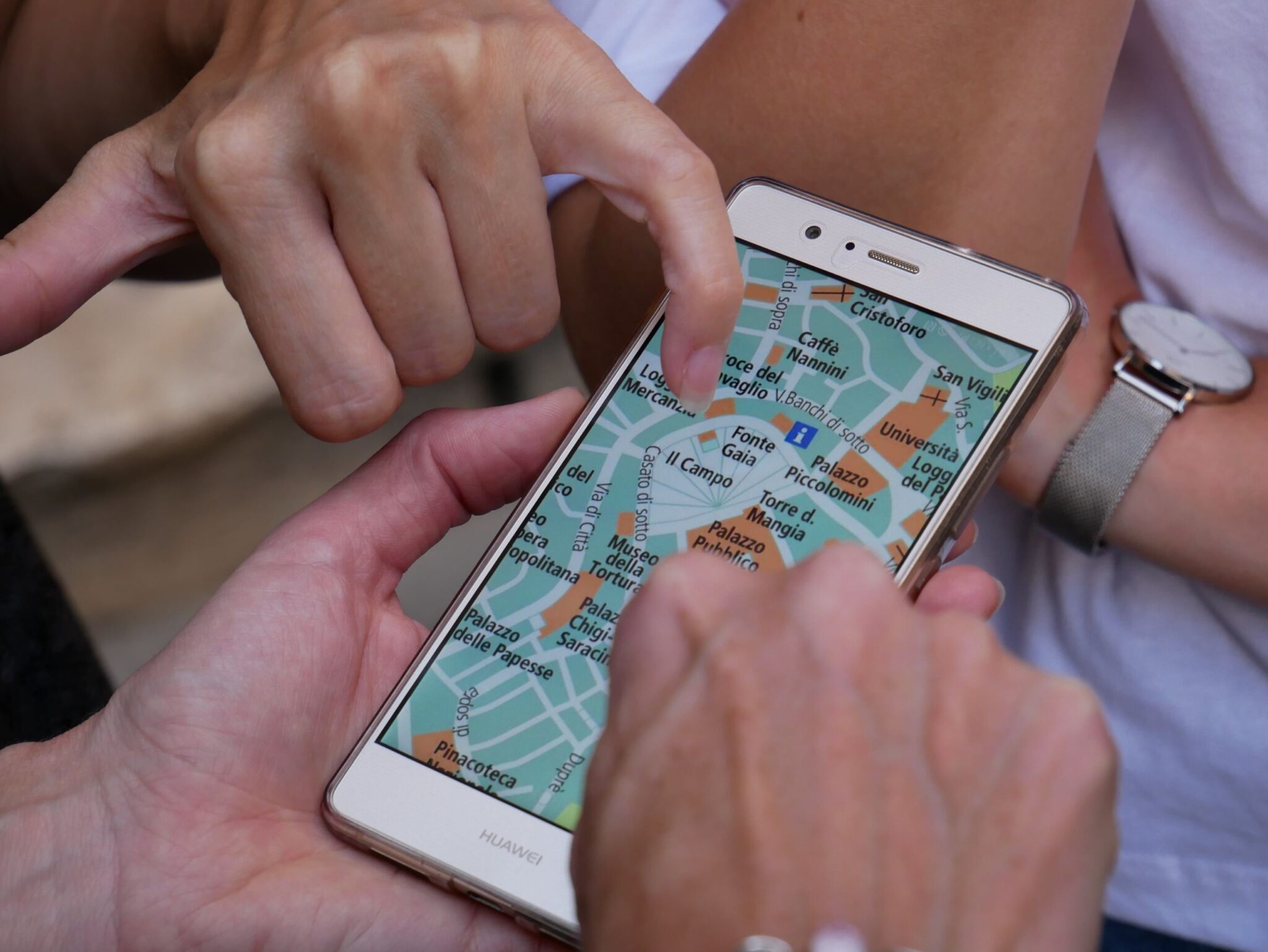Why App Ratings Matter (And How to Increase Yours)

Earlier this year, John Saito – UX writer at Dropbox – published an article on why he recently read thousands of reviews regarding the company’s app:
“I wanted to learn more about our users and what they thought about our product.
Yes, we run user studies at Dropbox, but I wanted to know more… I wanted to read their actual words – tirades, triumphs, and all.”
Love them or hate them, App Store ratings and reviews are part of the deal. As explained by Apple, ratings and reviews allow users to “give feedback on their experience with an app, request improvements from developers, and help others decide which apps they’d like to try”.
If after over a decade, Dropbox still highly regards reviews, you should too. But it goes far beyond the “warm and fuzzy” feeling John noted.
With over 3.5 million apps in the Google Play Store and 2.1 million in the Apple Play Store, application discoverability has become increasingly difficult.
Not only is the app marketplace crowded, competition is also strengthening.
How often should you update your mobile app? Survey says…
The Shrinking
In the last year, the number of available iPhone apps in the App Store declined by one million. While that may seem like a bad thing, it’s actually quite positive for potential app users.
Apple recently introduced new standards to improve the quality of the apps in the store. The company is cleaning house by removing old apps that are no longer compatible with new versions of iOS, the incessant number of copycat apps, and unnecessary antivirus tool. This will hopefully up the quality of apps in store.
But this also means companies need to start paying attention to some of the most important triggers in app discoverability and installs…. Ratings and reviews.
A Brief History of App Ratings
Over the short history of app stores, there’s been a shift in the perception of high-quality reviews and ratings for apps. Back in the day, having a 5-star app was a badge of honor. However, depending on the circumstances, the highest rating may not mean much.
That said, a higher ranking definitely gives your app a competitive advantage. In fact, the average rating of the 100 most downloaded free App Store apps is 4-stars.
On the flip side, having a less-than-stellar star rating raises lots of questions about the app’s ability to deliver on expectations.

Ranking with Ratings
App store ratings are crucial to discovery, downloads, and in-app purchases. But they aren’t just about gaining a potential user’s trust. They’re also an integral part of the search ranking algorithm in both Apple’s App Store and Android’s Play Store.
In 2013, an App Store search algorithm update placed a greater level of importance on ratings and reviews. Subsequently, Apple rewarded higher rated apps and penalized lower rated apps.
The mobile marketing team at Fiksu noted that, following the update, apps with an average rating of 3-stars or under ranked significantly lower while those with at least 4-stars enjoyed an increase in ranking.

Fiksu: App store Rank by Rating
This shows that highly-rated apps are more likely to have higher priority in search results. Ultimately meaning more users will find the app easily and more users will download it.
That said, an app’s rank isn’t only affected by download numbers. Though neither Apple nor Google have officially released specifics on calculating search rankings, it’s widely understood that a number of different factors affect rankings including:
- Rating/review quantity
- Rating/review quality
- Download count
- App usage statistics
- Uninstalls
- Growth
- ASO keywords
Other factors may include whether an app is paid versus freemium, as was the case in 2017 when Apple’s top grossing algorithm experienced a reshuffle.
At the time, Apple engineers claimed this was an accident; though further research has speculated it could be algorithm tweaking or testing a future algorithm update.
Driving Downloads
Beyond ranking, however, an app’s rating also impresses potential users.
According to one survey, 96 percent of users download 4-star apps, compared to only 50 percent of users who admit to downloading a 3-star app, and a mere 15 percent who dare download 2-star apps.
Additionally, over half of app users say they typically check an app’s rating before downloading it.
Intertwined with star ratings are reviews. They provide a channel (sometimes the only one) for customers to leave feedback, tell you exactly what they want in an app, and report crashes. Developers can identify customer pain points as well as use key feedback to design a product users actually want.
But it’s equally important to increase your collection of written reviews, as having zero or just a few reviews doesn’t exactly instill confidence. In a sea of early-adopters, people still want to know an app is worthy of their time and critical smartphone space.
In fact, 77 percent of users said they read at least one review before downloading a free app. That number grows to 80 percent if downloading a paid app.
How to Improve and Increase App Store Ratings
We now all agree that ratings are important. So don’t just put an app in the store and call it a day. But how do you earn those ratings and maintain them effectively?
Don’t make users jump through hoops: Onboarding is all about quickly demonstrating the app’s core values and what added benefits the app provides. A simple but effective onboarding experience is key to making a great first impression. Create an easy sign up flow that illustrates how to navigate and use your app’s main features. By getting users to engage from the start, they’re more likely to return.
Empathize with users: When asking for reviews and ratings in your app, you should empathize with the user. The best approach is to ask if they are enjoying the app with a simple yes/no response. If yes, ask for a review. If the answer is no, however, give them an opportunity to send feedback. Also, never force a review as this might annoy the user, ultimately leading to a bad review.
The right timing: You would never request ratings from a user immediately following a crash or another failure. Instead, ask for ratings after specific usage milestones – such as following regular usage or after they’ve finished a booking. Doing it this way means you’re more likely to contact them when they’re happy.
Optimization: User experience can make or break ratings. That’s why the better your app is the easier it is to gain ratings and reviews. As such, make sure applications are continually updated and optimized.
Be responsive: Read user feedback regularly and respond accordingly. It’s important to craft individual responses that show you are truly listening and generally interested in helping. This is especially critical in the case of a bad review. By doing this, you’re showing credibility. Consider having a dedicated team or contact for user criticism.

Ratings and reviews are essential to discoverability and installs. With a few easy improvements, you can help increase both. Learn more
